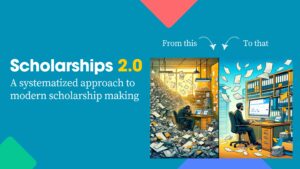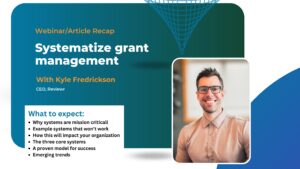
Scholarships 2.0
Schedule a Demo Calculate your ROI The Critical Importance of Systems in Scholarship Management: A Comprehensive Guide and Proven Framework In an
After months of collecting scholarship/grant applications and conducting thorough reviews, you finally announce recipients just to hear from disgruntled applicants who did not receive funding. Or, worse… your governing body comes calling for an audit. Sound familiar? Not only does creating transparent and compliant scholarships and grants protect yourself, it also provides the engaging experience built on trust and integrity that your audience desires.
In this webinar we discuss:
Ever hear the saying, “better safe than sorry”? Well, this applies here as well. Not only is it easier to cover yourself when you plan things out from the beginning, but it also forces you to structure grants and scholarships a bit differently that actually enhance the overall experience.
Community and donor integrity
Proof of a fair and compliant process
Synergy between departments
When the higher ups come knocking
How do you blind data?
Last up in the essentials to creating a transparent and compliant scholarship and grant program is developing a proven and fair workflow. By publicly outlining, and proving, that a dedicated process is in place eases applicants minds and holds scholarship and grant makers accountable.
What makes up a proven and fair workflow?

Schedule a Demo Calculate your ROI The Critical Importance of Systems in Scholarship Management: A Comprehensive Guide and Proven Framework In an

Schedule a Demo Measure your grants ROI TL;DR: Why Systematic Grant Management Matters Problem: Most grantmakers use disconnected tools (spreadsheets, email, shared
